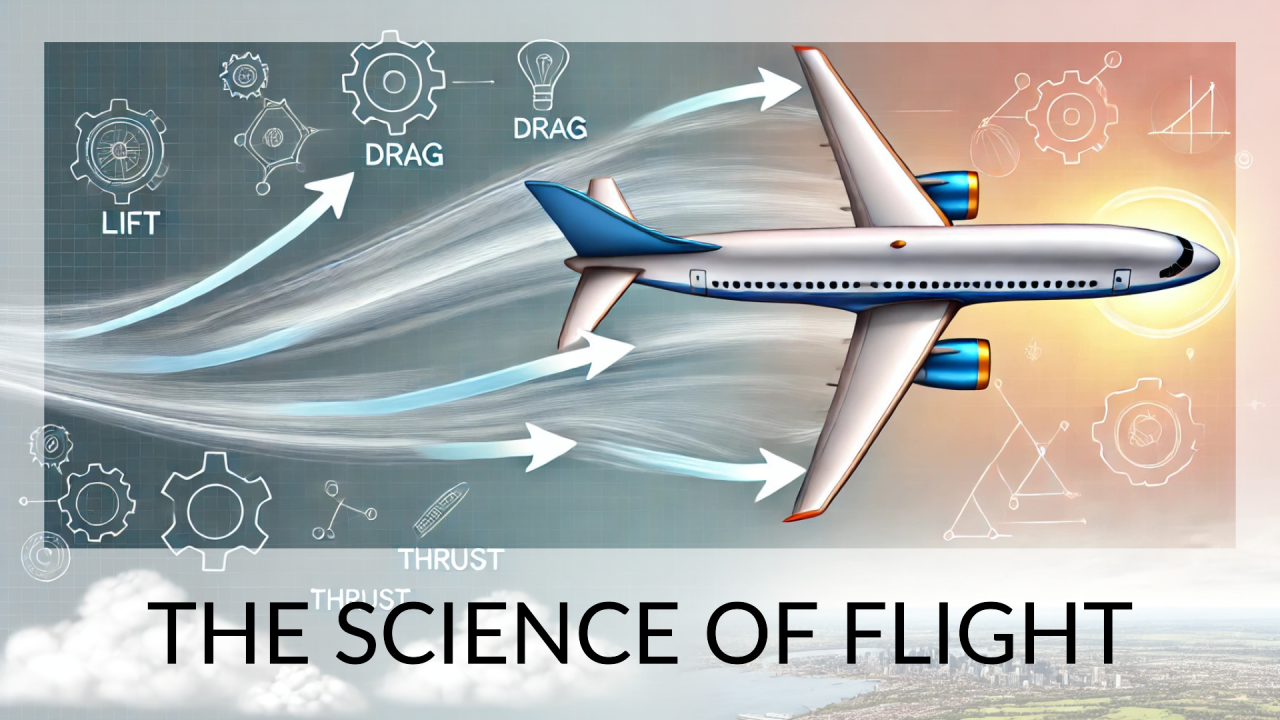Introduction
Aerodynamics is the study of how air interacts with solid objects, particularly aircraft. It plays a crucial role in aviation, determining how airplanes generate lift, reduce drag, and maintain stability in flight. Understanding aerodynamics is essential for pilots, engineers, and aviation enthusiasts who want to master the principles of flight.
The Four Forces of Flight
Every aircraft in motion is subjected to four primary forces:
- Lift – The upward force generated by the wings due to differences in air pressure.
- Weight (Gravity) – The downward force pulling the aircraft toward Earth.
- Thrust – The forward force provided by engines or propellers.
- Drag – The air resistance opposing the aircraft’s forward motion.
For an aircraft to stay in the air, lift must counteract weight, and thrust must overcome drag.
How Lift is Generated
Lift is primarily produced by the airfoil shape of the wings. According to Bernoulli’s Principle, faster airflow over the curved top surface creates lower pressure, while slower airflow beneath the wing results in higher pressure, pushing the aircraft upward.
Additionally, Newton’s Third Law (action-reaction) contributes to lift, as the downward deflection of air by the wings results in an equal and opposite upward force.
Drag and How to Reduce It
Drag is a resisting force caused by air friction. There are two main types:
- Parasite Drag – Caused by non-lifting components like the fuselage and landing gear.
- Induced Drag – Generated by wingtip vortices and high angles of attack.
Aircraft reduce drag using streamlined shapes, retractable landing gear, and winglets to minimize turbulence at the wingtips.
Stability and Control
An aircraft’s ability to maintain steady flight depends on three stability factors:
- Longitudinal Stability (Pitch) – Controlled by the horizontal stabilizer.
- Lateral Stability (Roll) – Managed by the wings and ailerons.
- Directional Stability (Yaw) – Maintained by the vertical stabilizer and rudder.
Practical Applications in Aviation
- Understanding Stall and Recovery – A stall occurs when airflow over the wing becomes turbulent, reducing lift. Pilots can recover by lowering the nose and increasing speed.
- Effect of Flaps and Slats – Used to increase lift during takeoff and landing.
- Ground Effect – Increased lift and reduced drag when flying close to the ground.
- High-Speed Aerodynamics – As speed increases, compressibility effects and shock waves influence flight characteristics, requiring special considerations in supersonic and transonic flight.
Conclusion
Aerodynamics is the foundation of aviation, influencing everything from small aircraft to advanced jet fighters. By understanding aerodynamic principles, pilots can improve flight efficiency, safety, and overall performance in the air. Whether you’re a student pilot or an aviation professional, mastering aerodynamics is key to excelling in the world of flight.


